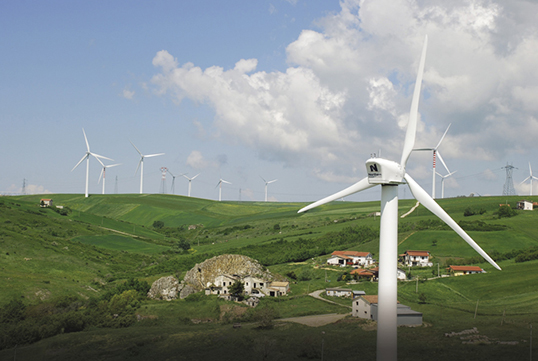Back in the 1990s, a team of scientists, engineers, and the like, all at NASA’s Ames Research Center, were tasked with developing technology to aid in the settlement of Mars.

Included on their list of to-do’s was designing a complete ecological system to sustain astronauts living on the Red Planet. In order to generate electricity, the group developed a hybrid concept that combined two renewable sources: wind and sun.
In order to test their technology, the Ames team turned to one of the harshest environments on Earth: the South Pole.
“The South Pole was a really good analog for Mars,” said Ames senior research scientist David Bubenheim, who was on the team at the time. “The technology features for establishing a human habitat on Mars are very similar to the features needed to make something work at the South Pole.”
At the same time Ames targeted the South Pole as its testing grounds for their technology, the National Science Foundation was in the process of updating its South Pole station. “Using renewable energy technology could be a way of reducing the amount of fuel they have to fly in,” Bubenheim said. So Ames partnered with NSF and the Department of Energy to incorporate their technology into the design of the new station. “NASA took the leadership on the team because we had the longest-term technology, a Mars turbine,” Bubenheim said. “But all of the main participants made major contributions. It was a great example of how government is supposed to work.”
Worth noting is that a few years prior to this partnership forming, NSF worked with Vermont-based Northern Power Systems to deploy 3-kilowatt wind turbines on Black Island, Antarctica. Come 1993, NPS was awarded a contract by Ames to construct a completely redesigned wind turbine at the South Pole, but this time around, it would have to include all of the features and technologies developed by the Ames team for their Mars settlement project.
The main item was a direct-drive turbine,” Bubenheim said. “We eliminated a whole lot of mechanical systems” that were prone to freezing up at very cold temperatures. “And then there were materials, lubricants and power-control systems — features that we were putting in for five years unattended, no-maintenance kinds of operations.”
NPS finally installed the 3-kilowatt turbine in 1997. The team then began developing a 100-kilowatt turbine for the same extreme conditions, with the first two prototypes going to Alaska and Colorado for testing.
“Turbines traditionally have had a hard time being employed in Alaska because they would typically freeze and not work in the winter,” Bubenheim said. “Nobody wanted to climb up on the wind turbine and work on it at 40 below zero in the dark.”
Flash forward to today and the NASA-derived NPS turbine, now referred to as the Northern Power 100, has a growing role in the renewable energy initiative, with more than 200 currently in operation. That’s because the turbines can generate power off winds as low as 6 mph, and each individual turbine can produce enough energy to power 25 to 30 homes.
All together, the turbines have accumulated 2.5 million run hours, and represent a reduction in carbon emissions of 50,000 tons annually.
“We designed a simple and elegant machine with as few moving parts as possible, to both minimize and simplify maintenance needs,” Lynch said. He adds that the largest markets for the turbines are the UK and Italy, and that both the Caribbean and Alaska are expressing a demand.
“They are finding their niches in places where a smaller high-performance turbine can integrate into small electrical grids,” Bubenheim said.
And while the wind turbine hasn’t made its way to Mars just yet, it doesn’t mean the technology won’t ever make its way there. Bubenheim says the partnership between NPS and other government entities has produced a ton of data for NASA to use in building for future Mars missions, adding “now we have much better data and we can map the wind resources better than ever before. This way, we can get a very good idea as to how useful and applicable the wind technology will be.”
For now, though, we can continue using a technology meant to power another planet to instead supply our planet with clean energy.
Story via nasa.gov
Advertisement
Learn more about Electronic Products Magazine





